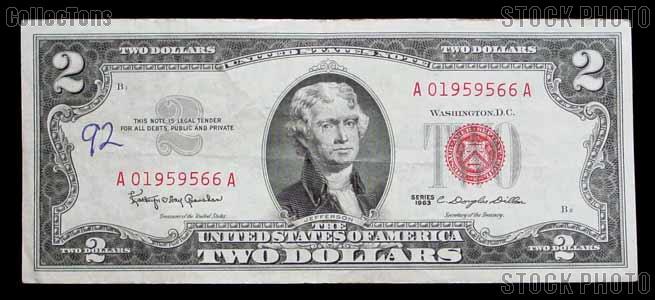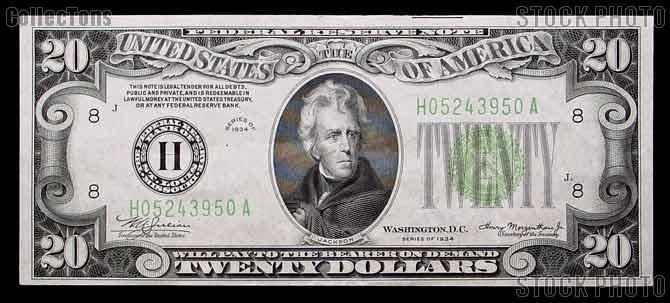How much would a 1934 twenty dollar bill be worth?
1934 Twenty Dollar Worth
The value of a 1934 series $20 bill varies depending on the condition of the bill and the bill's serial number. Generally, any 1934 series $20 bill not in pristine condition is only worth the face value of $20. 1934 series $20 bills are extremely common. Bills in perfect condition typically command a slight premium. 1934A,B,C,D: Green: $20 -$35: $40 -$75: $300-$500: 1934A (Hawaii) Brown: $30 -$60: $900. $2000.+ 1950,A,B,C,D,E: Green: $20 -$25: $50. $300.+ 1963,A, Green: $20 -$30: $40. 1969,A,B,C: Green: $20 -$25: $35. 1974: Green: $20 -$25: $35. 1977: Green: $20 -$25: $35. 1981,A: Green: $20 -$25: $30. 1985: Green: $20. 1988: Green: $20: $25. 1990: Green: $20: $25. 1993: Green: $20: $25. 1995: Green: $20: $25. Capital letters following the series year appear when there is a significant change in the note's appearance. Federal Reserve Indicators. For denominations $5, $10, $20, $50, and $100, the note has a letter and number designation that corresponds to one of the 12 Federal Reserve Banks.



The value to a collector depends upon (1) If it was a Hawaii emergency issue bill (2) The Series (1934, 1934 A, 1934 B, 1934 C or 1934 D) (3) The grade (condition) of the bill (4) If the serial number contains a star and (5) Which Federal Reserve Bank issued the note. Since you did not mention the word “Hawaii” being printed multiple times of the bill I will assume it is not a Hawaii emergency issue bill. From your description I would guess the grade is no better than “Very Fine” in which case the value to a collector is probably less than $30 unless the serial number contains a star. The different grades are described at http://www.thecurrencyhouse.com/index.cf… If the serial number does contain a star and the bill is in “very fine” condition the value to a collector would be closer to $100.
Related Questions
1934 20 Dollar Bill C Series 2016

NPR’s sites use cookies, similar tracking and storage technologies, and information about the device you use to access our sites (together, “cookies”) to enhance your viewing, listening and user experience, personalize content, personalize messages from NPR’s sponsors, provide social media features, and analyze NPR’s traffic. This information is shared with social media, sponsorship, analytics, and other vendors or service providers. See details.
You may click on “Your Choices” below to learn about and use cookie management tools to limit use of cookies when you visit NPR’s sites. You can adjust your cookie choices in those tools at any time. If you click “Agree and Continue” below, you acknowledge that your cookie choices in those tools will be respected and that you otherwise agree to the use of cookies on NPR’s sites.
